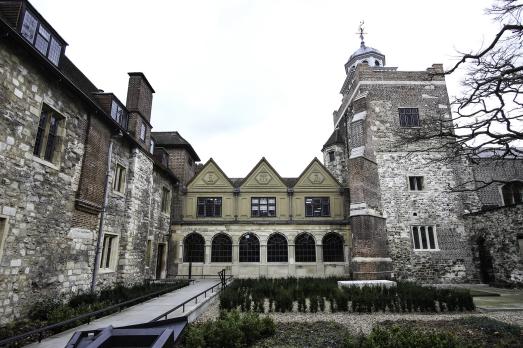Since 1613 it has been the place of worship for the beneficiaries (called Brothers) of the charity, Sutton’s Hospital, and until 1872, the boys and staff of Charterhouse school.
The chapel is approached through Charterhouse Square, which was purchased in the 1340s as a burial place for victims of the Plague.
Visitors using the entrance to the Charterhouse Museum, which was opened by the Queen in 2017, will see that the chapel is attached to the main building of the almshouse, a manor house built in the 1540s using the materials from the monastery, which was suppressed in 1538. The most striking external feature of the chapel is the squat tower, which dates from the 14th century.
Inside, access to the chapel is through a vaulted chamber from the last phase of the Carthusians’ building, in 1521. The screen designed by Blore in the 1840s, which divides this space from the south nave has some curious little carved Indian heads on it.
The south nave occupies the footprint of the monks’ Chapter House. It was here that the last Prior, John Houghton, declared his intention to refuse to accede to the Act of Supremacy, by which Henry VIII became Head of the Church in England in 1534. Houghton became the first martyr of the English Reformation.
The main flavour of the furnishings is Jacobean. The pulpit (reduced in the 1840s) and the Communion Table both date from the earliest days of the charity and have been in continuous use since.
The 1840s collegiate style seating along the south wall, and the corresponding seating on the north side of the building remind us that this was where the boys of the school gathered with the Brothers from 1614 to 1872, when the school moved to Godalming. Those boys included John Wesley, Roger Williams, William Thackeray, and Robert Baden-Powell.
The north nave houses the striking memorial to Thomas Sutton, who endowed the Charity in 1611 to house and support 80 poor elderly single people and to school 40 boys from poor families. This monument features early work by Nicholas Stone, who later became Master Mason to James I and Charles I.
The chapel is used daily for prayer. Visitors are welcome to join the Brothers (who from 2017 include women) and the Preacher.


